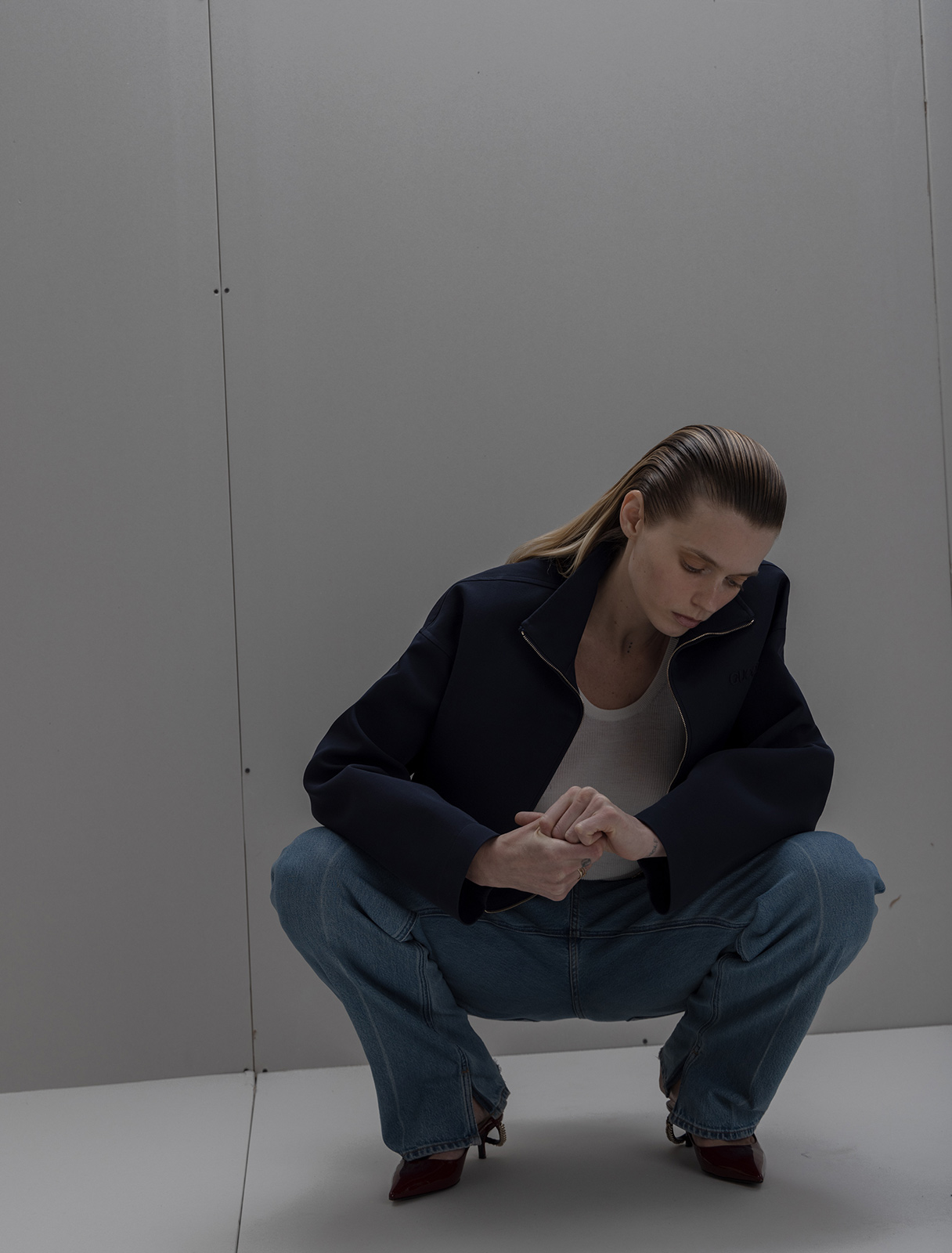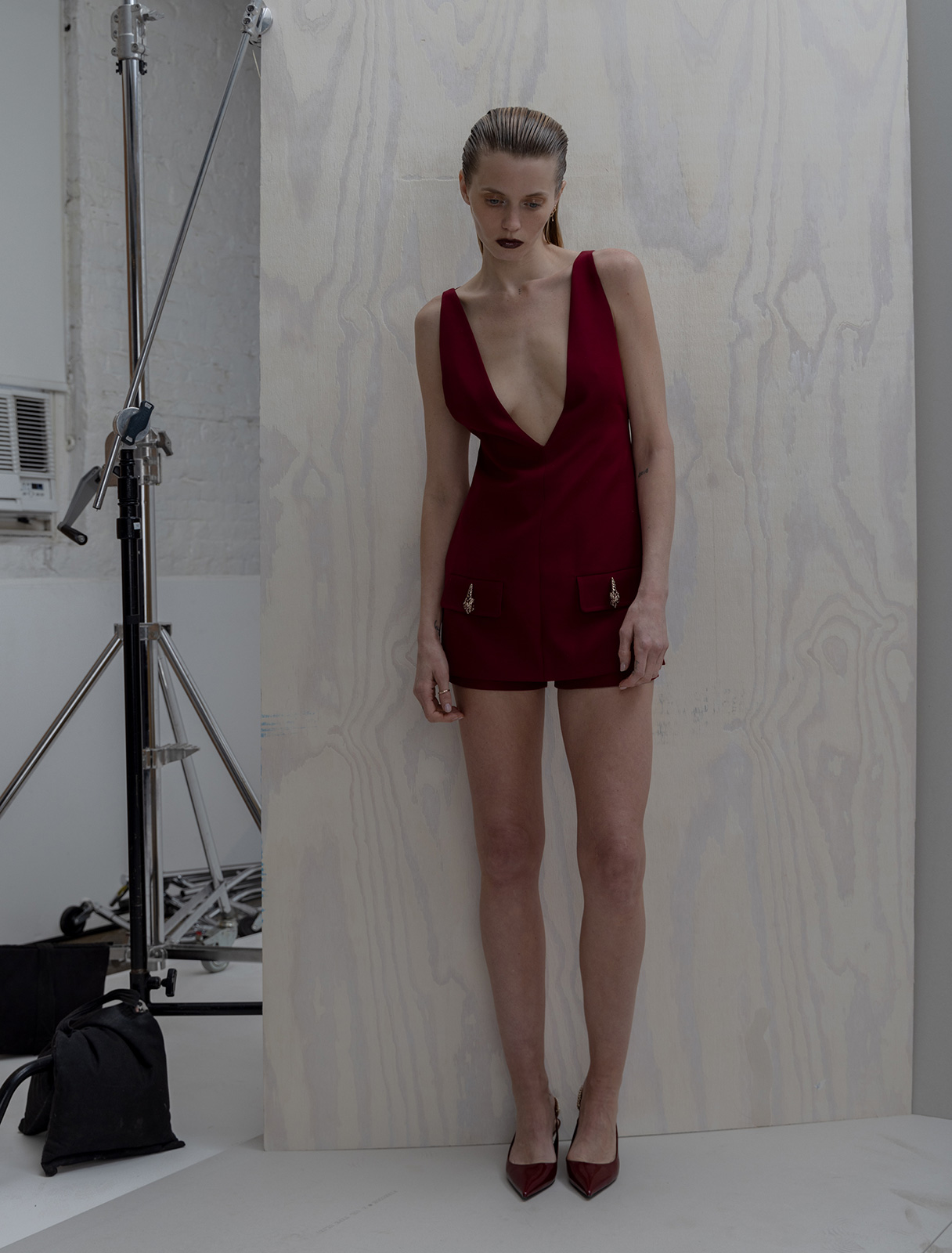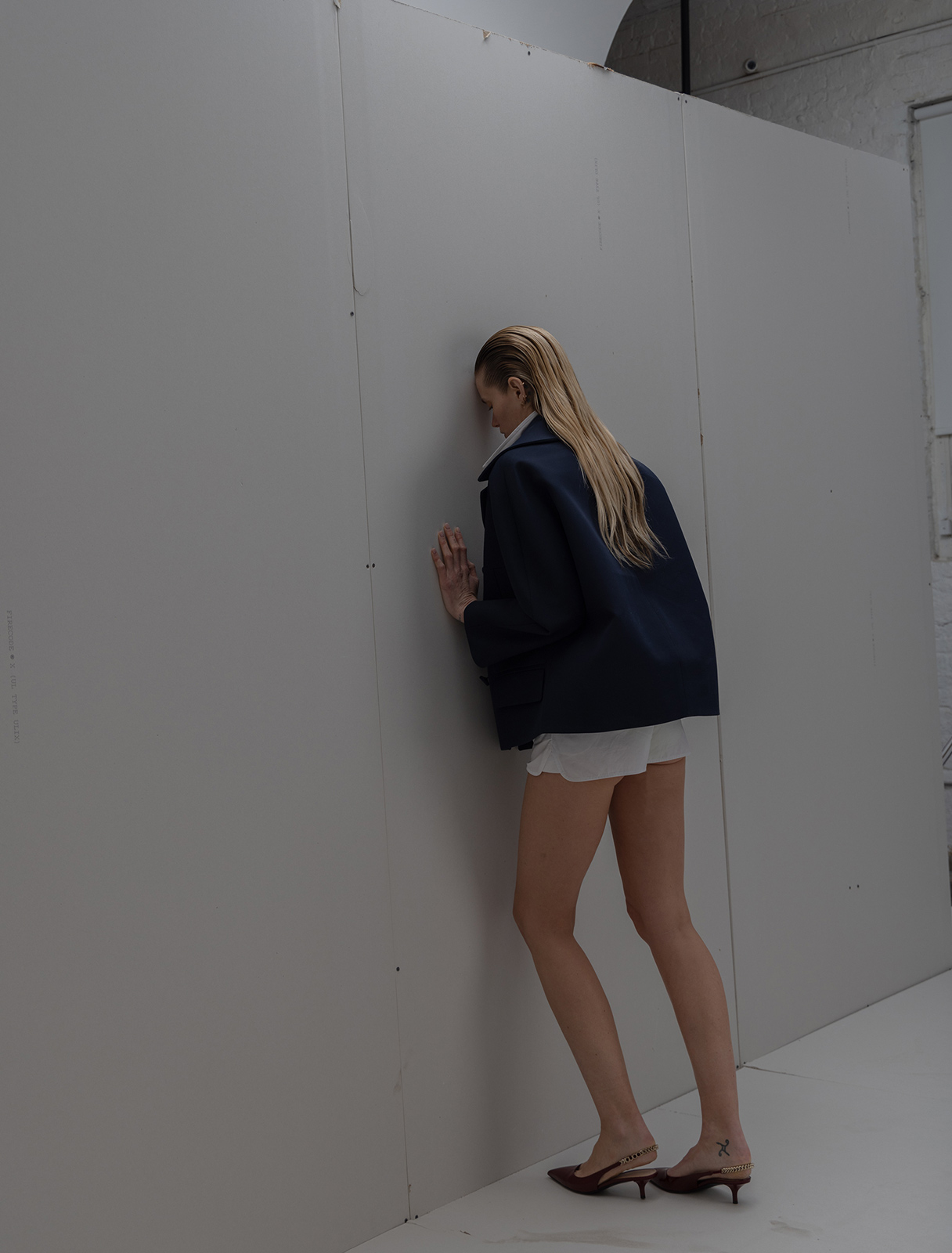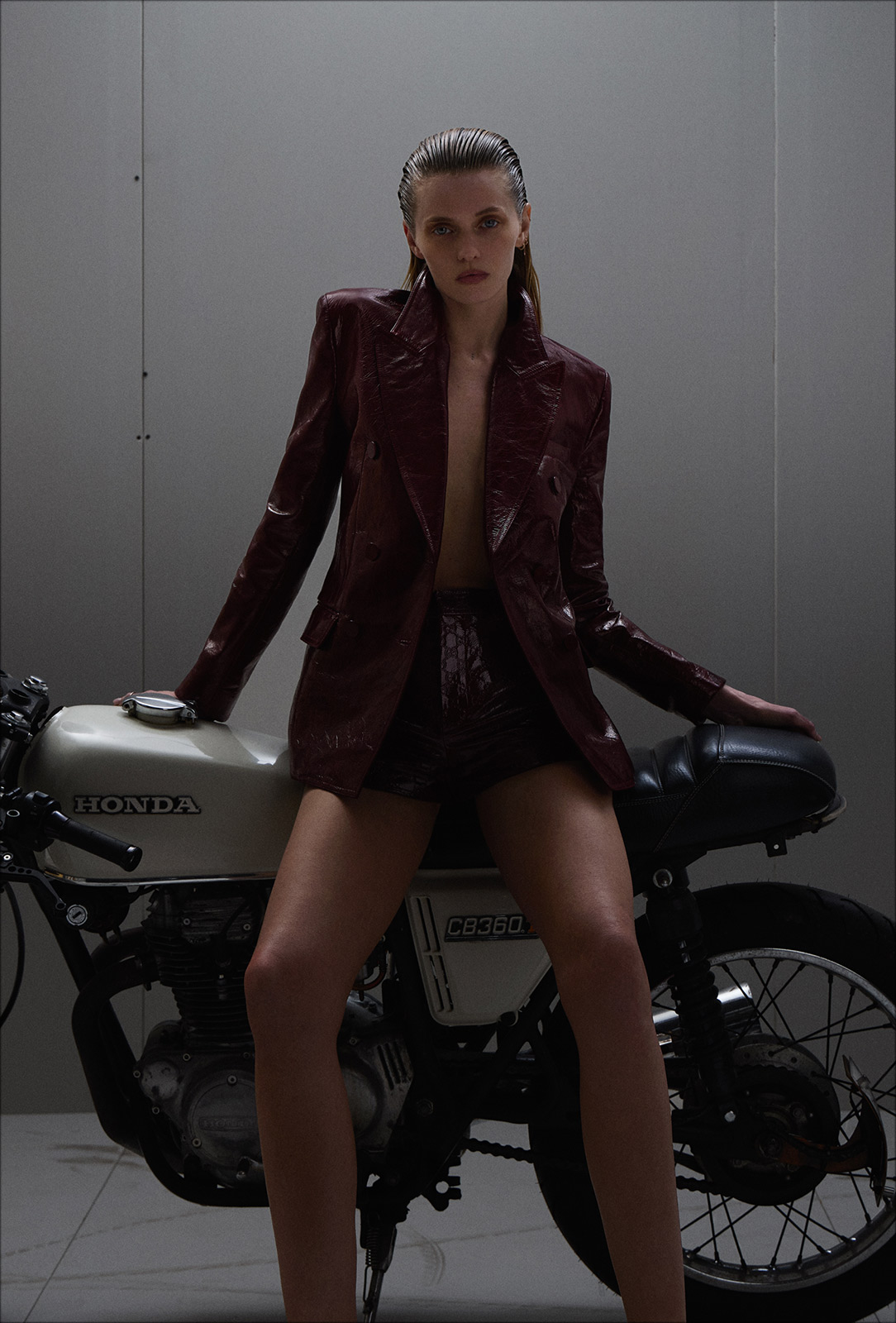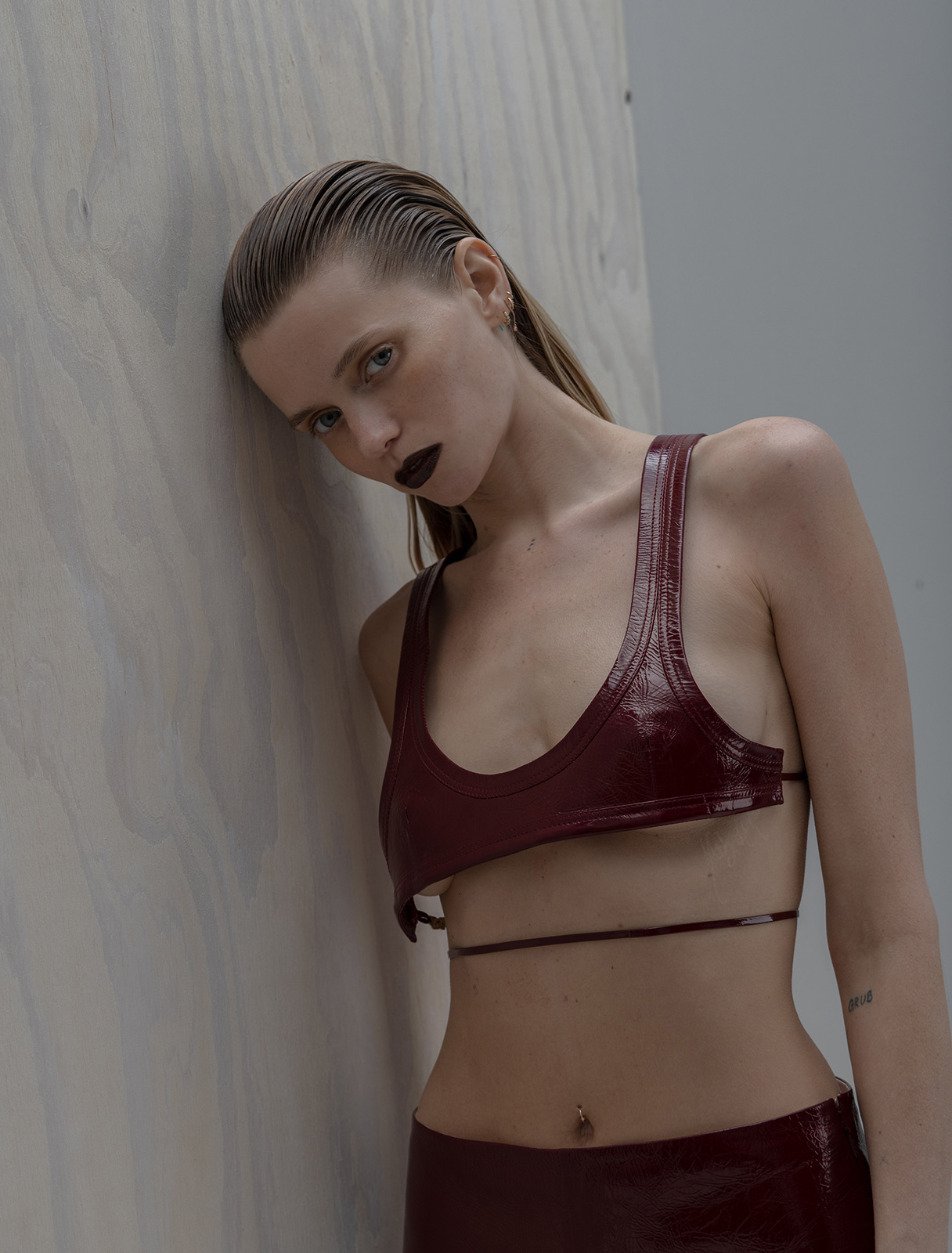
In an exclusive digital interview for Document’s Spring/Summer 2024 issue, the cover star details how she found acting and a new sense of creative fulfillment
Whether stuck in front of “girl” or “factor,” as commonly seen in modern media, no one knows what “it” is. As actress Abbey Lee learned as a teen, “it” was apparently something to describe her; she was scouted as a model by Chic Management’s Kathy Ward one day at the beach, signing to the elite Australian agency responsible for such talent as Miranda Kerr within weeks. Ten years later and Lee was a top model, in a band (although Our Mountain wasn’t a long-standing project, they did shoot an Inez and Vinoodh music video that doubled as a Balmain campaign) and growing increasingly frustrated with her industry. By 2013 she was on set shooting George Miller’s Mad Max: Fury Road (2015), her first feature film. In the 11 years since, Lee doesn’t have to worry about who thinks she’s “it,” because she has it—the star quality to thrive in the entertainment world.
The actress has an impressive range, having played a mob boss’s girlfriend, a white supremacist witch, and even a model jealous to the point of murder in The Neon Demon (2016). Lee’s ability to captivate both runway and cinema audiences comes from an imagination she attributes to her childhood as well as a dedication to craft she learned in her adult years, a trait she’ll bring to her role as a Civil War-era sex worker named Marigold in Kevin Costner’s Horizon: An American Saga in theaters later this summer.
For Document’s Spring/Summer 2024 issue, the performer stars in a cover story by Jackie Nickerson and styled by Style Director Ronald Burton III, as well as shares her thoughts on the sensitivity behind evil characters, her dream collaborators, and the importance of female relationships on set.
Maya Kotomori: I know you got your start as a model, tell me about that.
Abbey Lee: It all sort of happened out of my control, really. I was scouted on the beach when I was about 14 by a woman who turned out to be the owner of an agency called Chic. Then I entered a nationwide competition for something called Girlfriend Magazine, and I won that, and that’s really when things kicked off. I was quite young, so before that I didn’t really have any particular ideas about what I wanted to do. I was just a very creative person and imaginative child—I drew a lot, I painted, I loved to pretend I was a fairy and all that stuff. When modeling came along, I had no idea what it was and I thought it was quite strange, but I gave it a shot and ran with it. I’m naturally the sort of person who’s looking for things to challenge me, and I’m not afraid of trying things that I haven’t tried before. So I think the idea of throwing myself into something was exciting to me more than anything.
Maya: The main commonality between modeling and acting is that you’re in front of the camera. Based on your experience in both worlds, what would you say is the main difference between being in front of a camera for a photo and when shooting a movie?
Abbey: I think the big difference is that both require you to have a relationship with the camera, but one needs you to be aware and comfortable and disassociate… I mean, you cannot be as conscious in front of the camera as an actor as you are as a model—you have to let go. Whereas modeling, the entire point is to seduce the camera and hold yourself in a way that will be photographically agreeable. I think I had a lot of undoing that I had to do when I realized that as an actor, if you’re too conscious of the camera, you’re not really a good actor anymore. I had to let go of a lot of what I learned while modeling, but you can’t let go completely. You get on set, and the DP wants you to make sure that you hit your mark, and you’ve got to look straight at the camera, but not down the barrel. There’s a set of rules with acting and the camera I will say, and the years and years of modeling meant that I was very well equipped to deal with all of that.
Maya: What would you say is the mythology of the model?
Abbey: I think the mythology is that models are dumb. Well, that’s a bit harsh—maybe vapid is the right word, or simple, or vain. Whereas all the brilliant models I’ve met in my time are very individual creatures, and strange and smart and worldly and deep. I think that’s actually part of why they become such great models, because that stuff translates in a picture. So the idea that models are somewhat empty vessels is far from the truth from what I’ve seen.
“I like doing flashy work, but I’m also in a place where I’m looking for more joy and humor in characters even if they do tread on the darker side of things. I’m really interested in finding lightness.”
Maya: This reminds me of The Neon Demon, where you actually play a model character while in real life you’re a model transitioning into acting. It feels like that film is relevant to a lot of changes we’re seeing in the industry today. Tell me about the process of making that movie.
Abbey: There was a part of me that wanted to resist that role because I was trying so hard to be a great actor and I stopped modeling to focus on it. I wanted to sort of disappear as a model so I could be taken seriously as an actor. So for that role to come about, there was a bit of friction inside of me. But Nicolas Winding Refn, who’s a brilliant filmmaker, and Elle Fanning both are a part of it, I thought it would be silly not to go for it. I tried to use that friction to my advantage in playing Sarah. The role felt quite symbolic to me. Not so much the ‘Does that sort of model exist in the industry who’s so ferociously jealous that she’s willing to kill another model?’—because that’s outrageous—but there is this underlying feeling that you have an expiration date, that you’re only as hot as the girl who’s coming up behind you, the feeling of competition, of isolation, of your beauty being valued so highly that it makes you money. You feel quite fragile at times. Sarah was a symbol of all those collective fears of modeling.
Nicolas Winding Refn was really changeling. He was constantly flipping the script on its head, constantly challenging me to see it differently. He was really adamant that my character should be really still even though in the script she was written as being quite violent and smashing things. He kept pulling things away from me and ended up creating this really eerie, calm character who I found really interesting. He taught me a lot about stillness, so it was a great experience. It was quite profound for my work as an actor.
Maya: Are those the roles that you’ve come to like as an actress? What is your ideal role?
Abbey: It changes as I change, you know? My interests and what I have access to change a lot as I develop and as a person, that’s why I’m not afraid of these evil characters. Well, I don’t know if they’re what you would call ‘evil’ quote unquote. I like doing flashy work, but I’m also in a place where I’m looking for more joy and humor in characters even if they do tread on the darker side of things. I’m really interested in finding lightness. In Lovecraft Country I play a white supremacist witch, and I found that the most important thing was to make sure that she was as human as possible and therefore as effective as possible. Even if you didn’t see it in the show, she had some of it coming off of her skin, she had to feel as human as possible and therefore, scarier. I guess I’m just really attracted to layered women, they’ve got so much meat to them.
Maya: With Christina—you killed it, by the way—what makes that role the scariest is the idea that a person like that could exist. You’re introducing that humanity into someone that might have supernatural abilities, but what makes them evil is the idea that someone human could still do the things she did.
Abbey: Yeah, I mean that character absolutely exists. Obviously not the witch aspect of it, but that very insidious nature most certainly exists in people.
“There was no plan, acting turned up in the same way modeling did, it just found me.”
Maya: Who are some dream people in the biz that you’d like to work with?
Abbey: My perfect co-star is Andrew Scott. Like if he asked me to come and be a tree in the background of one of his performances I’d be a tree. Truly, that man blows my mind. I’d also love to get Kate Winslet in there, she’s doing such amazing work. Directors… I would love to work with Adam McKay and I love Justin Kurzel. I could list 100 directors I’m desperate to work with, and mainly I’d love to get on a set where everyone is a woman—a strong female director and a female writer and a female DP. I’ve worked with women showrunners and directors but I haven’t been on a set where there’s tons of women, so that would be the ideal.
Maya: Are there any standout female relationships that you’ve built throughout your career? This kind of connects to the model mythology question, I also feel like there’s a mythology of the female actress with this intense level of competition.
Abbey: I have to say, on almost every job I’ve done, I have made an incredibly close girlfriend. I mean, I’ve made a lot of male friends too—I’m very boy energy, I’m the tomboy of my friends. On Florida Man, Otmara Marrero is one of my ride or dies. In Old, me and Vicky Krieps became really great friends; on Lovecraft Country, Wunmi Mosaku became like a sister to me. In Mad Max: Fury Road I made really close friends with Rosie Huntington-Whiteley and Zoë Kravitz and Riley Keough. I feel so blessed to have met the people I’ve met through acting and I really cherish female relationships. It’s very much once you can get over this bullshit of women being against each other, and you realize you’re all just trying to be great in an industry that doesn’t favor women, it’s just more fun. Obviously there are changes to the industry and it’s doing a lot better, but you can see the discrepancies every day on jobs and it’s only helped me to have those relationships through that.
Maya: You had mentioned earlier that you were trying to resist the model role in The Neon Demon to make a clearer break as an actress. Were you always planning that move into acting? What did that switch look like for you?
Abbey: There was no plan, acting turned up in the same way modeling did, it just found me. I definitely wasn’t looking to act, but was trying very hard to break out of modeling just because I didn’t feel fulfilled, and I was frustrated at the limitations. I wanted to express myself.
Maya: And there was a wonderful path ahead for you.
Abbey: Yes, I would say that.
Hair Jonathan De Francesco at Streeters. Make-up Jen Myles at Streeters. Manicure Pika at See Management. Set Design Caz Slattery at CLM. Tailor Kerry Phelan. Photo Assistant Nathaniel Jerome. Set Design Assistant Lauryn Holmquist. Stylist Assistant Morgan Jimenez. Production Director Lisa Olsson Hjerpe at CHAPEL Productions. Production Assistant Taki Vlahopulosk, James Scalise.


